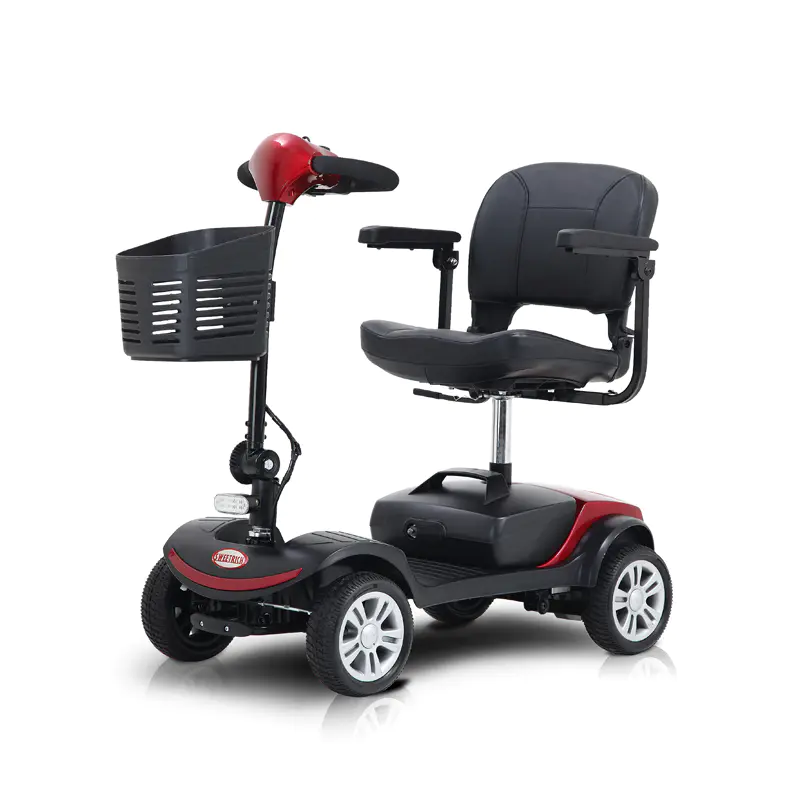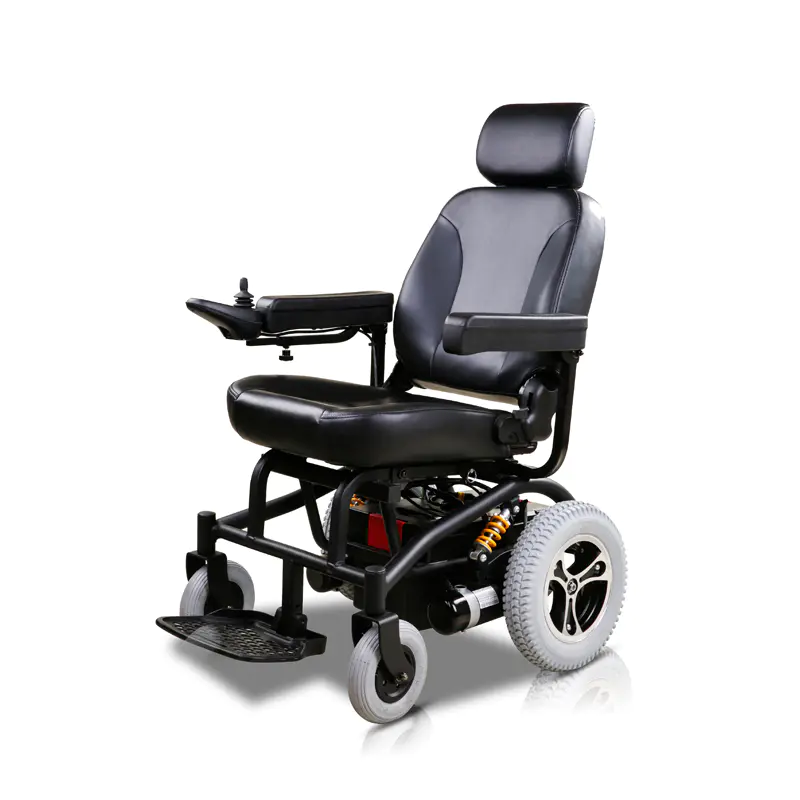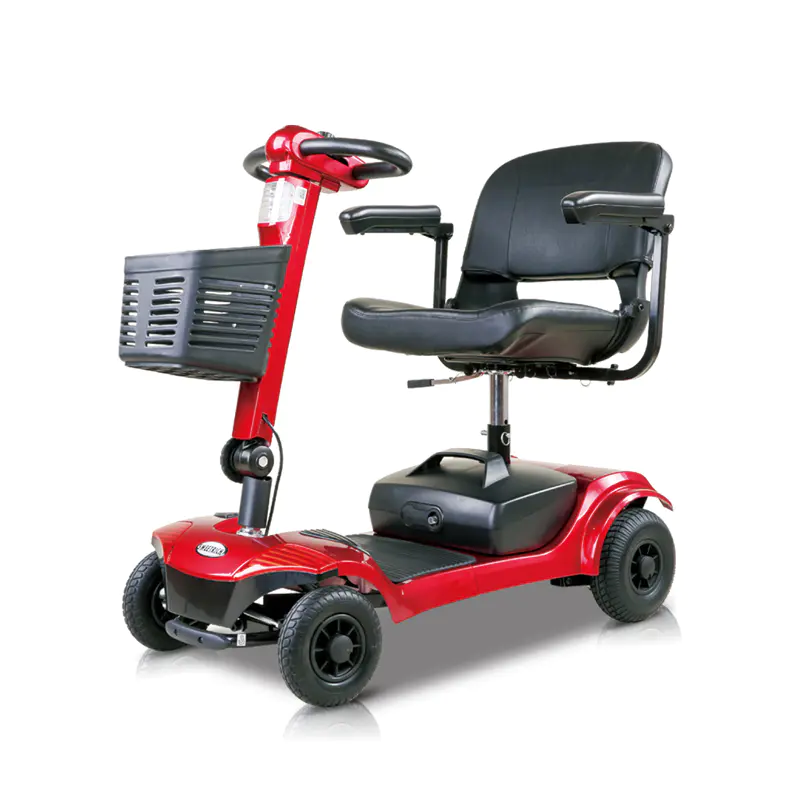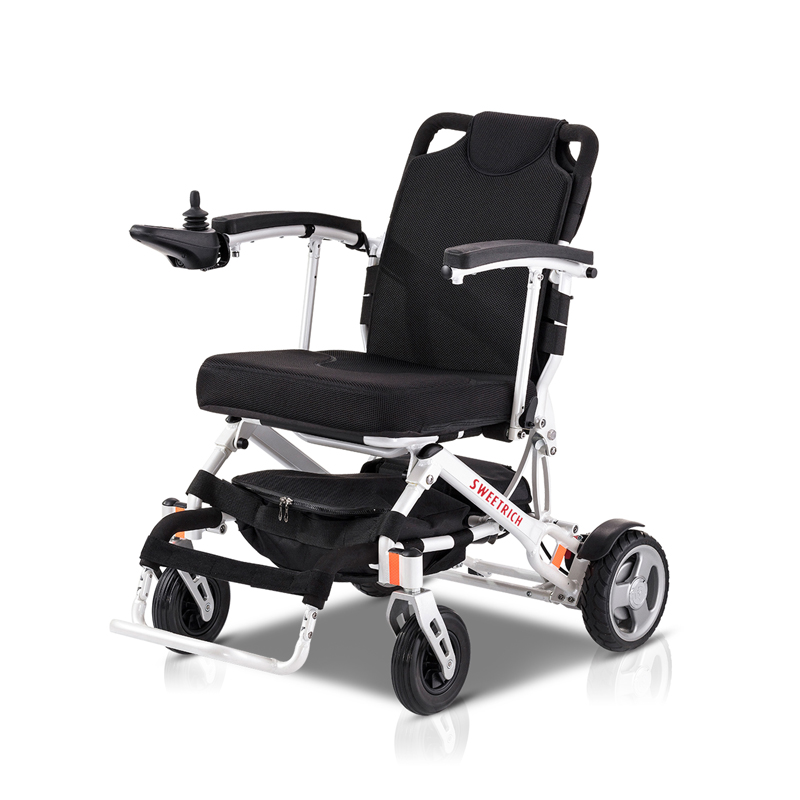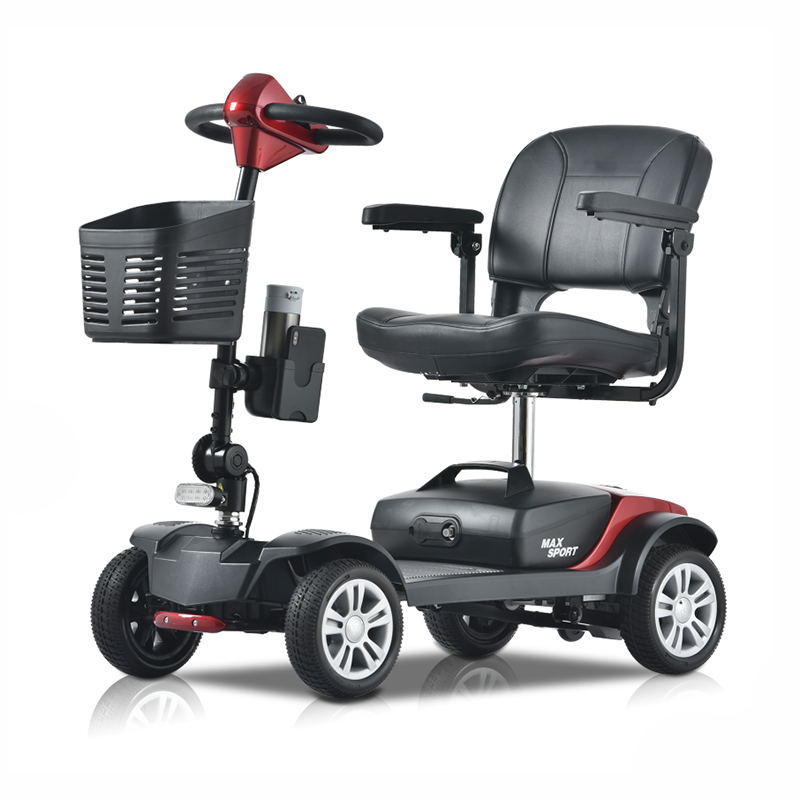An electric mobility scooter is a power-driven personal transportation device designed to help users travel more conveniently and independently. It is commonly used in urban areas, residential areas, and public facilities where smooth travel is crucial for daily life. Mobility Scooter Factory typically focus on ride comfort, stable power output, and ease of use to meet diverse travel needs.
Key Components and Their Functions
Electric mobility scooters operate through the coordination of several essential parts:
1. Motor System
The electric motor converts battery power into movement. When the user activates the throttle controller, the system signals the motor to turn the wheels. This allows the scooter to accelerate, maintain speed, and climb moderate inclines depending on its configuration.
2. Battery Pack
The battery serves as the scooter’s energy source. It provides steady and controlled power to the motor, lighting system, dashboard, and safety features. The battery’s capacity and chemical composition play an important role in how long and how effectively the scooter operates.
3. Throttle and Control System
The rider uses the tiller-mounted throttle lever to regulate speed. The system includes acceleration controls, braking functions, steering input, and sometimes basic diagnostic indicators. These controls allow the rider to easily manage speed and direction.
4. Frame and Seat Structure
The chassis supports the entire scooter and ensures structural stability. The seat, typically cushioned and adjustable, enhances rider comfort during extended use. The ergonomic design contributes greatly to user experience.
5. Wheels and Suspension
Depending on the model, the scooter may include small indoor-oriented wheels or larger wheels designed for varied terrain. Suspension systems absorb shocks from bumps or uneven surfaces, promoting stability and reducing rider fatigue.
How an Electric Mobility Scooter Moves
- When the rider activates the throttle:
- The controller draws electricity from the battery.
- The motor converts the electricity into mechanical rotation.
- The drive system turns the wheels.
- Braking is controlled through an electronic system that reduces power and may include regenerative braking.
This seamless interaction allows the scooter to operate smoothly, making it suitable for sidewalks, stores, parks, and residential communities.
How Does the Battery System Affect the Performance of an Electric Scooter?
The battery is the core component of an electric scooter, determining its range, ride smoothness, and reliability. Different battery types, capacities, and discharge characteristics significantly impact the scooter's performance and user experience.
1. Power Output and Stability
A well-designed battery system ensures stable power output, resulting in smooth acceleration and reliable motor performance. With stable voltage, the scooter maintains smooth operation and predictable handling.
2. Range
The battery's energy storage capacity determines the scooter's range on a single charge. Larger capacity or more efficient batteries support longer daily use, which is crucial for frequent travelers or users who need to travel for extended periods throughout the day.
3. Charging Requirements
Charging time affects the convenience of daily use. The shorter the charging time, the faster the user can resume use. Developing good charging habits is essential for extending battery life.
4. Environmental Conditions
Batteries may react differently in high and low temperature environments. High temperatures accelerate battery aging, while low temperatures reduce short-term output. Understanding these effects helps users better plan their outdoor trips.
5. Weight and Portability
Battery weight affects the overall weight of the scooter, which in turn impacts ease of handling and transport. Lighter batteries are easier to carry and store, especially beneficial for users who frequently fold or disassemble their scooters.
Lithium-ion Batteries vs. Lead-acid Batteries: Which is Better for Electric Scooters?
Electric scooters require efficient and reliable battery systems, and the two common choices are lithium-ion and lead-acid batteries. Each type of battery has its advantages, so the choice mainly depends on the user's lifestyle, usage habits, and long-term expectations.
Lithium-ion Batteries
Lithium-ion batteries are known for their portability, making scooters easier to handle and transport. Their high energy efficiency supports longer ranges on a single charge, which is highly advantageous for users who rely on scooters for daily commutes or long-distance travel. Another advantage is their low maintenance requirements. Lithium-ion batteries are generally stable and require minimal daily maintenance, resulting in a more convenient user experience.
Lead-acid Batteries
Lead-acid batteries are a reliable and economical option that has been widely used in electric scooters for many years. Lithium-ion batteries are typically favored by users with short, regular travel distances and a focus on cost-effectiveness. Although slightly heavier, their simple design and stable output make them a practical choice for daily commutes. For users who are accustomed to regular charging, they are sufficient for moderate and regular daily use.
Choosing the Right Battery
The choice between lithium-ion and lead-acid batteries depends on travel habits, charging methods, and personal preferences. Users who prioritize lightweight design, long driving range, and low maintenance costs may prefer lithium-ion batteries. Those on a budget and with shorter daily commutes may find lead-acid batteries more suitable.
| Feature | Lithium-Ion Battery | Lead-Acid Battery |
|---|---|---|
| Weight | Lightweight for easy handling | Heavier and bulkier |
| Energy Efficiency | Supports longer usage per charge | Shorter operating periods |
| Charging Speed | Typically quicker charging | Longer charging cycles |
| Maintenance Requirements | Low maintenance | Requires consistent charging habits |
| Lifespan Behavior | Slow degradation over time | More noticeable wear after repeated use |
| Portability Suitability | Ideal for folding or travel scooters | Suitable for heavier, high-stability scooters |
1. Which Battery Is Better for Daily Use?
For individuals who:
- travel frequently
- require a portable scooter
- need quick charging
- prefer lighter equipment
Lithium-ion batteries are generally well-suited due to their energy storage, reduced weight, and convenient charging profile.
2. When Are Lead-Acid Batteries a Good Choice?
Lead-acid batteries are often used when:
- the scooter does not need frequent lifting or transport
- the design prioritizes stability
- lower initial cost is important
Their reliability and consistent output make them suitable for indoor or moderate-distance daily operations.
How to Choose an Electric Scooter for Everyday Use
Choosing the right electric scooter requires considering your lifestyle needs, travel habits, physical comfort, and usage environment. A scooter that meets these factors will offer better long-term performance and user satisfaction.
Key Considerations for Choosing an Electric Scooter for Everyday Use
1. Usage Location
Different usage environments require different scooter features:
- Indoor Environment: Smaller turning radius, compact size
- Outdoor Environment: More powerful motor, suspension system, larger wheels
- Mixed Use: Balanced size and functionality
- Understanding typical travel routes helps determine the suitable design.
2. Comfort and Ergonomics
Comfort is crucial for everyday use. A suitable electric scooter typically includes:
- Adjustable seat height
- Supportive backrest
- Comfortable armrests
- Responsive steering control
Users who sit for long periods should prioritize padded seats and adjustable seat positions.
3. Transportation and Storage
Some people need an electric scooter that can be easily moved into a car or folded for storage. In this context:
- Lightweight design
- Folding frame
- Removable battery
These significantly improve ease of use.
4. Daily Mileage
Long-distance users benefit from:
- Longer battery life
- Stable power output
- Efficient charging capabilities
Short-distance users may prefer a lightweight, compact, and convenient design.
5. Terrain Considerations
Everyday terrain is crucial:
- Flat surfaces: Lightweight scooters perform well
- Sidewalks or parks: Medium suspension is better
- Uneven surfaces: Larger wheels and a more robust structural support are more advantageous
Choosing a scooter suitable for a specific environment can improve safety and comfort.
6. Ease of Use
Everyday scooters should have the following characteristics:
- Intuitive operation
- Comfortable steering
- Easy acceleration and braking
- Stable low and medium speeds
A test ride (if possible) can help users assess steering sensitivity and cornering response.
How to Maintain Your Electric Scooter to Extend Its Lifespan
Proper maintenance ensures long-term reliability, smoother performance, and fewer unexpected mechanical failures. A well-maintained scooter can run efficiently for many years.
1. Battery Maintenance and Charging Habits
Users should:
- Develop good habits
- Charge after each use
- Avoid storing the battery completely depleted
- Store the scooter in a cool, dry environment
- Use the correct charger provided with the scooter
Avoid:
- Leaving the battery unused for extended periods
- Overcharging for extended periods
- Extending the scooter in direct sunlight for extended periods
- Good charging habits can significantly extend battery life and reduce long-term replacement costs.
| Recommended Practices | Practices to Avoid |
|---|---|
| Develop good charging habits | Leaving the battery unused for extended periods |
| Charge after each use | Overcharging for extended periods |
| Avoid storing the battery completely depleted | Exposing the scooter to direct sunlight for extended periods |
| Store the scooter in a cool, dry environment | |
| Use the correct charger provided with the scooter |
2. Tire and Wheel Maintenance
Wheels directly affect the vehicle's stability and handling. Users should regularly check the following:
- Decreased tread grip
- Uneven wear
- Embedded debris
- Tire pressure (for pneumatic tires)
Well-maintained wheels ensure smooth, predictable riding.
3. Braking System Check
Whether electronic or mechanical brakes, they should operate smoothly. Signs requiring maintenance include:
- Delayed braking response
- Unusual noise
- Inconsistent braking performance
- Regular checks help ensure safe daily operation
4. Cleaning and Maintenance
Dust and dirt buildup can affect steering and control response. Simple cleaning procedures include:
- Wiping the joystick and controls
- Removing dirt from the wheels
- Checking for loose screws on the frame
- Avoiding excessive moisture
This helps maintain mechanical stability and a good appearance.
5. Storage
Electric scooters should be stored in:
- A dry indoor space
- An area with moderate temperature
- A space that prevents accidental tipping
- A controlled storage environment reduces wear and tear on electronic components and the battery system.
6. Regular Professional Maintenance
Even well-maintained electric scooters require regular inspection by a professional technician. Professional maintenance helps check:
- Electrical connections
- Steering system calibration
- Motor performance
- Battery health
Regular inspections help improve the long-term reliability and safety of the electric scooter.
As personal mobility continues to evolve, electric mobility scooters remain an important solution for users seeking confidence, convenience, and independence in daily travel. Reliable design, stable battery systems, and proper maintenance all contribute to long-term performance and user comfort. Companies such as Sweetrich focus on developing accessible mobility solutions that support practical daily use and consistent riding experiences.

